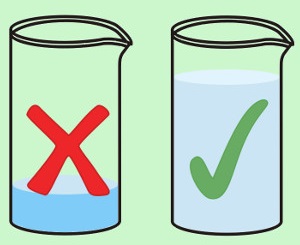The outflow rate is closely related to the number of the spray nozzle to be used. However, it is better to lower the concentration of the solution and increase the outflow rate. Small drops are less likely to settle on the leaves. Wind - the enemy of high-quality spraying. Therefore, accustom yourself to discipline on the field - to reduce the costs of plant protection products, the sprayer speed during processing should not exceed 18 km/h.

You should not expect that for high-quality treatment of the field with a small dose of herbicide, it is enough just to lower the rate of outflow. From the point of view of a gardener who waters his garden, this sounds logical. But when it comes to the work of the sprayer on the field, it is better to adhere to the minimum flow rate of the working fluid from 200 l/ha. Why? Let's figure it out.
In contrast to liquid fertilizers, which most often must simply «be on the ground», plant protection products must come out of the tank and onto the leaves of the target crop (weed). For what the droplet size should ideally be from 200 to 400 microns. Smaller droplets are an aerosol that flies well and evaporates. Larger drops will flow to the ground immediately.
Immediately after exiting the spray nozzle, the following forces begin to act on the droplets:
That is, the drops of the working fluid must not "just fly" 50 cm from the rod to the ground (sheet). These factors will interfere with them, and during the day they may unpredictably replace and complement each other. Another important factor is the height of the rod above the soil level. The lower it is, the easier it is to drop to fall down on the leaves, but the more difficult it is to save the barbell from colliding with the soil.
The smaller the sprayer number, the smaller the size of the droplets it creates (except for IDKT sprayers – more details), which means the stronger the effect of wind and evaporation on processing. If you want to reduce these effects, you need to increase the size of the drops. That is, it is desirable to dilute the active substance to such concentrations at which the rate of application of the already prepared solution will be at least 200 l/ha. Sprayers operating at a such rate of outflow usually produce a stream of fairly large drops.
The drip plume during the operation of the sprayer is the most graphic proof of the wrong choice of the nozzle number (droplet size).
If representatives of the selling company are trying to convince you that such an approach (application with a small rate) is economical and beneficial, ask for the results of the evaluation of several fields, where the yield is compared after different types of processing. Pay attention to compare the fields where the treatment was carried out with the norm of 200 and 50 l/ha and do not allow comparison with the field that was left without treatment at all, since this is an ordinary marketing trick.
Of course, when the wind speed is more than 10 m/s, spraying needs to be stopped, but even if the wind allows to treat the area, with a small size of droplets, an unspecified part of the working fluid will evaporate or be blown away by the wind. Wet weather is especially dangerous when using small drops - it can dramatically prolong their lifespan, slowing evaporation. An aerosol of such long-lived drops can be picked up by the breeze and transferred to a neighboring field. As a result, you will spoil the relationship with the beekeeper or the owner of the damaged crop (depending on who exactly and how used the territory affected by your plant protection plroducts).
And let's not forget that as a result of this «transfer», an expensive substance will not get into your field, leaving your own culture without protection.
Summarize. The effect of wind, air humidity and other factors on small droplets is very large. Therefore, to reduce the loss of plant protection products, it is better to use solutions of reduced concentration, in which the outflow rate starts from 200 l/ha.